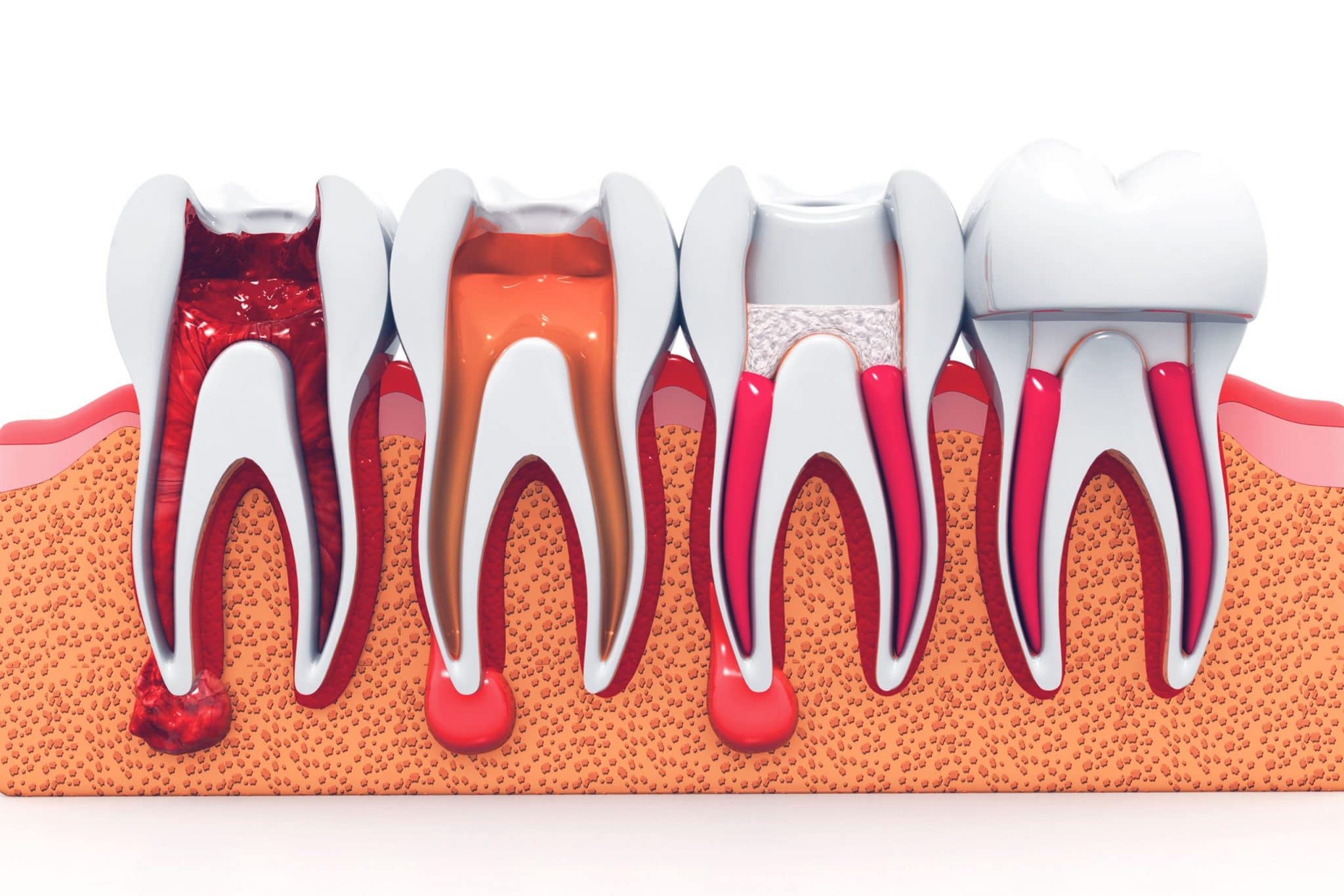What is a Root Canal?
The structure of the tooth includes a crown and a root. The crown is the part of the tooth that is above the gum, and the tooth’s root is directly in the jawbone. Nerves run along the entire length of the tooth, from the pulp chamber to the point of entry of the nerve. These nerves are located in narrow canals – as known as the root canals of the tooth. Root canal treatment involves intervention in the inner cavity of the tooth, in the part that occupies the nerve endings.




